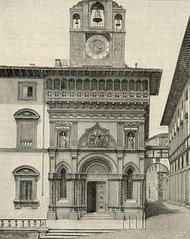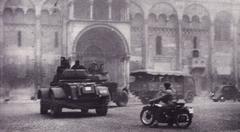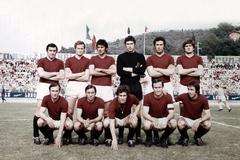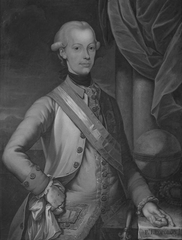Complete Guide to Visiting Santa Maria delle Grazie in Arezzo, Italy
Publication Date: 31/07/2024
Introduction
Santa Maria delle Grazie in Arezzo, Italy, is not just a religious edifice but a symbol of rich cultural, historical, and artistic heritage. This guide delves into the fascinating history of the church, which dates back to the 15th century when it was commissioned by Count Gaspare Vimercati of the Sforza family. Over centuries, the church has undergone architectural evolution, integrating Gothic and Renaissance influences, particularly through the contributions of renowned architect Donato Bramante. The church is globally celebrated for housing Leonardo da Vinci’s masterpiece ‘The Last Supper,’ completed between 1497 and 1499, which has made it a magnet for art enthusiasts and historians worldwide (Santa Maria delle Grazie Tickets, Wikipedia). The church has faced numerous challenges, including damage during the French invasion of Milan and World War II bombings, but it has been meticulously restored and preserved, earning the status of a UNESCO World Heritage Site in 1980. Today, Santa Maria delle Grazie continues to captivate visitors with its architectural beauty and artistic treasures, offering a unique blend of history, art, and spirituality (Santa Maria delle Grazie Tickets).
Table of Contents
- Introduction
- Early Beginnings and Construction
- Architectural Development
- Renaissance Influences
- Leonardo da Vinci’s Masterpiece
- Historical Turmoil and Restoration
- 18th and 19th Century Renovations
- World War II and Preservation Efforts
- UNESCO World Heritage Site
- Modern-Day Significance
- Visitor Experience
- Ticket Prices and Visiting Hours
- Travel Tips
- Nearby Attractions
- FAQ
- Conclusion
Early Beginnings and Construction
Santa Maria delle Grazie in Arezzo, Italy, has a rich history that dates back to the 15th century. The church was commissioned by Count Gaspare Vimercati, a prominent figure from the Sforza family, who generously donated land to the Dominican community for the construction of a monastery and church. The foundational stone for the monastery complex was laid on September 10, 1463, under the direction of Guiniforte Solari, Milan’s prominent architect at the time (Santa Maria delle Grazie Tickets).
Architectural Development
The construction of the monastery was completed in 1469, while the church itself was consecrated in 1482. The church’s design is a testament to the Gothic architectural style, which was prevalent during that era. However, significant Renaissance influences were introduced later, particularly through the contributions of Donato Bramante, who was commissioned to work on the convent’s sacristy, known as the Cappella della Passione (Santa Maria delle Grazie Itinerary).
Renaissance Influences
In the late 15th century, Ludovico Sforza, Duke of Milan, played a crucial role in the church’s development. He transformed the church into a mausoleum for his family and enlisted the renowned architect Donato Bramante to enhance the structure. Bramante added a dome, apses, a refectory, and a cloister, which significantly contributed to the church’s architectural and artistic significance (Santa Maria delle Grazie Tickets).
Leonardo da Vinci’s Masterpiece
One of the most significant events in the history of Santa Maria delle Grazie was the commissioning of Leonardo da Vinci to paint “The Last Supper” on the refectory’s north wall. This masterpiece was completed between 1497 and 1499 and has since become one of the world’s most celebrated works of art. The painting’s creation marked a pivotal moment in the church’s history, attracting art enthusiasts and historians from around the globe (Wikipedia).
Historical Turmoil and Restoration
The church faced numerous challenges over the centuries, including damage during the French invasion of Milan in 1500. The French soldiers occupied the convent and damaged “The Last Supper.” However, by 1512, the French were expelled from Milan, and the church underwent restoration. The 16th and 17th centuries saw further modifications and additions, reflecting evolving architectural styles (Santa Maria delle Grazie Tickets).
18th and 19th Century Renovations
In the 18th century, the church underwent significant renovations, with changes made to the interior to reflect contemporary tastes. The 19th century brought further challenges during the Napoleonic occupation, which led to the suppression of religious orders and affected Santa Maria delle Grazie. The French seized “The Last Supper,” but the painting was returned to Milan in 1800 (Santa Maria delle Grazie Itinerary).
World War II and Preservation Efforts
The 20th century was marked by significant preservation efforts, particularly after the church faced damage during World War II bombings. On August 15, 1943, the refectory was struck by Allied bombing. Remarkably, Leonardo’s painting on the north wall of the refectory survived because the bombs only caused the south wall of the hall to collapse. Restoration efforts commenced to preserve its historical and artistic significance (Wikipedia).
UNESCO World Heritage Site
In 1980, Santa Maria delle Grazie, along with “The Last Supper,” was designated as a UNESCO World Heritage Site. This recognition highlighted the church’s cultural and historical importance, ensuring that it would be preserved for future generations. Today, Santa Maria delle Grazie continues to attract visitors worldwide who come to admire its architectural beauty and, most notably, Leonardo da Vinci’s masterpiece (Santa Maria delle Grazie Tickets).
Modern-Day Significance
Santa Maria delle Grazie remains a symbol of Milan’s rich cultural and artistic heritage. The church’s interiors offer a stunning blend of architectural styles and exquisite artwork. The rectangular layout, adorned with intricate details and a magnificent tiburio dome, showcases the grandeur of the early Italian Renaissance. Visitors can marvel at the interplay of light and architectural elements as they explore the rows of seven square side chapels, each sponsored by prominent families and featuring exceptional artworks (Santa Maria delle Grazie Itinerary).
Visitor Experience
For those planning to visit Santa Maria delle Grazie, it is essential to note that general admission to the church is free, and it is easily reachable using public transportation. The closest major station is Cadorna, accessible via the M1 (red) or M2 (green) metros or the tram. However, if you want to see Leonardo’s “The Last Supper,” you’ll need a timed ticket. This famous painting isn’t a fresco but a wall painting done with tempera, which means it has suffered significant deterioration over time. To protect the artwork, there is a limit of 18 people per 15-minute slot (Santa Maria delle Grazie Itinerary).
Ticket Prices and Visiting Hours
- General Admission: Free for the church.
- The Last Supper: Requires a timed ticket, typically costing around 15 euros. Advance booking is recommended.
- Visiting Hours: The church is usually open from 7:00 AM to 12:00 PM and from 3:00 PM to 7:00 PM. ‘The Last Supper’ can be viewed from 8:15 AM to 7:00 PM, but timings may vary, so it’s best to check in advance.
Travel Tips
- Public Transport: Use the M1 (red) or M2 (green) metros to reach Cadorna station, which is a short walk from the church.
- Guided Tours: Consider booking a guided tour to gain deeper insights into the history and artistry of Santa Maria delle Grazie.
- Photographic Spots: Capture stunning photos of the church’s exterior and its beautifully adorned interior chapels.
Nearby Attractions
Located near Santa Maria delle Grazie, several attractions will give you a glimpse into Milan’s artistic and architectural wonders. Popular nearby attractions include the Duomo di Milano (Milan Cathedral), which offers intricate architecture and stunning rooftop views. Visitors can also explore other renowned Milan sites, such as the Milan Cathedral, through various tour options, including short hour-long tours centered on “The Last Supper” and full-day city tours (Santa Maria delle Grazie Itinerary).
FAQ
Q: Do I need to book tickets in advance for ‘The Last Supper’?
A: Yes, it is highly recommended to book tickets well in advance due to the limited slots available per viewing.
Q: Are there any guided tours available?
A: Yes, several guided tours are available. These tours offer detailed insights into the history and significance of the site.
Q: What are the best times to visit Santa Maria delle Grazie?
A: Early mornings or late afternoons are ideal to avoid large crowds and enjoy a more peaceful visit.
Conclusion
In summary, the history of Santa Maria delle Grazie is a testament to its enduring cultural and artistic significance. From its early beginnings and Renaissance influences to the preservation efforts that have safeguarded its treasures, the church remains a beacon of Milan’s rich heritage. Visitors to Santa Maria delle Grazie can immerse themselves in its historical narrative while marveling at the architectural and artistic masterpieces that define this iconic site.
Call to Action
Planning your visit to Milan? Don’t miss out on experiencing Santa Maria delle Grazie and Leonardo da Vinci’s ‘The Last Supper.’ Download the mobile app Audiala for more travel guides, and follow us on social media for updates on Milan’s historical sites.





